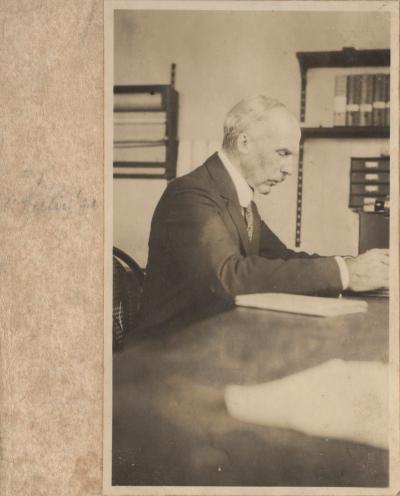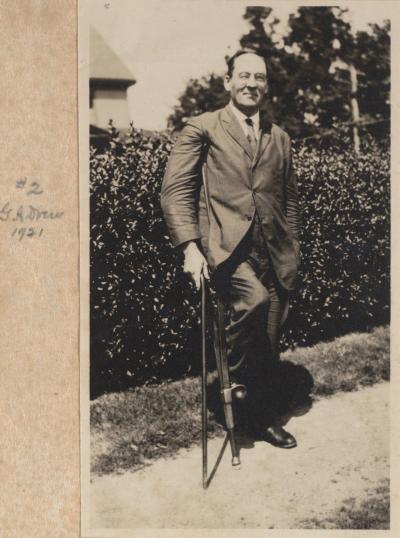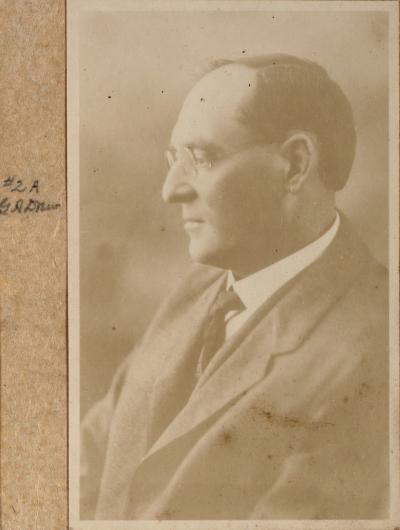Matching Items (2,124)
Filtering by
- All Subjects: People

Description
The purpose of this paper was to systematically review current literature regarding the effect of hand splints on aesthetic outcomes for individuals with acquired hand deformities. Hand splints vary in form and function, and are used to maintain or ameliorate hand function and aesthetics. A literature search was performed on peer-reviewed publications that used splinting as an intervention for conservative hand improvement. Evidence from ten randomized clinical trials (published from 2003 to 2015) was evaluated for aesthetic improvement among a total of 659 subjects. Cosmetic outcomes were analyzed by a change in angle measurements, such as extensor lag, ulnar deviation, and passive and active range of motion. Of these ten studies, five focused on hand deformities caused by neurological impairment, while the other five measured those with musculoskeletal complications. Only two of the ten studies concluded that splinting could aesthetically improve the hands, and only one of these reporting statistical significance in its data. The data was not only limited in quantity, but was presented in heterogeneous formats. There was an extensive variation in measured outcomes, intervention protocols, follow-up times, and many other aspects of the studies; this dissimilarity led to difficulty in performing a systematic assessment. The majority of evidence concludes that splinting does not improve the appearance of deformities, however none directly investigated this measure. Therefore, further RCTs that include measurements of cosmetic traits are necessary to better quantify the effect of splinting for management of hand deformities. This review was the first of its kind to evaluate the correction of hand deformities using splints as an intervention.
ContributorsVale, Nicholas Marshall (Author) / Santello, Marco (Thesis director) / Skiba, Jeffry (Committee member) / Harrington Bioengineering Program (Contributor, Contributor) / Barrett, The Honors College (Contributor, Contributor) / School of Biological and Health Systems Engineering (Contributor)
Created2017-05

Description
Background and Purpose— There is limited conclusive data on both pharmacological and holistic treatment options to improve cognition in adults after stroke. In particular, there is lacking evidence for cognitive rehabilitation in the subacute and chronic phases when cognitive impairment may be more perceptible. In this meta-analytic review, our primary objective was to determine the cognitive effects of aerobic exercise on post-stroke adults in the post-acute phases. Secondary objectives were to investigate the differential effects of aerobic exercise on sub-domains of cognitive function.
Methods— Data were extracted and filtered from electronic databases PubMed (MEDLINE), CINAHL, Embase, PsycINFO, and Scopus. Intervention effects were represented by Hedges’ g and combined into pooled effect sizes using random effects models. Heterogeneity was evaluated using the Chi-squared (Q) and I-squared statistics.
Results— Five studies met inclusion criteria, representing data from 182 participants. The primary analysis produced a positive overall effect of aerobic exercise on cognitive performance (Hedges’ g [95% confidence interval]= 0.42 [0.007–0.77]). Effects were significantly different from zero for aerobic interventions combined with other physical activity interventions (Hedges’ g [CI] =0.59 [0.26 to 0.92]), but not for aerobic interventions alone (P= 0.40). In specific subdomains, positive moderate effects were found for global cognitive function (Hedges’ g [CI] =0.79 [0.31 to 1.26]) but not for attention and processing speed (P=0.08), executive function (P= 0.84), and working memory (P=0.92).
Conclusions— We determined that aerobic exercise combined with other modes of training produced a significant positive effect on cognition in adults after stroke in the subacute and chronic phases. Our analysis supports the use of combined training as a treatment option to enhance long-term cognitive function in adults after stroke. Further research is needed to determine the efficacy of aerobic training alone.
Methods— Data were extracted and filtered from electronic databases PubMed (MEDLINE), CINAHL, Embase, PsycINFO, and Scopus. Intervention effects were represented by Hedges’ g and combined into pooled effect sizes using random effects models. Heterogeneity was evaluated using the Chi-squared (Q) and I-squared statistics.
Results— Five studies met inclusion criteria, representing data from 182 participants. The primary analysis produced a positive overall effect of aerobic exercise on cognitive performance (Hedges’ g [95% confidence interval]= 0.42 [0.007–0.77]). Effects were significantly different from zero for aerobic interventions combined with other physical activity interventions (Hedges’ g [CI] =0.59 [0.26 to 0.92]), but not for aerobic interventions alone (P= 0.40). In specific subdomains, positive moderate effects were found for global cognitive function (Hedges’ g [CI] =0.79 [0.31 to 1.26]) but not for attention and processing speed (P=0.08), executive function (P= 0.84), and working memory (P=0.92).
Conclusions— We determined that aerobic exercise combined with other modes of training produced a significant positive effect on cognition in adults after stroke in the subacute and chronic phases. Our analysis supports the use of combined training as a treatment option to enhance long-term cognitive function in adults after stroke. Further research is needed to determine the efficacy of aerobic training alone.
ContributorsMitchell, Michaela (Author) / Holzapfel, Simon (Thesis director) / Bosch, Pamela (Committee member) / College of Health Solutions (Contributor) / Barrett, The Honors College (Contributor)
Created2019-05

ContributorsMarine Biological Laboratory Archives (Publisher) / Arizona Board of Regents (Publisher)
Created1925-19-39 (uncertain)


ContributorsMarine Biological Laboratory Archives (Publisher) / Arizona Board of Regents (Publisher)
Created1934




